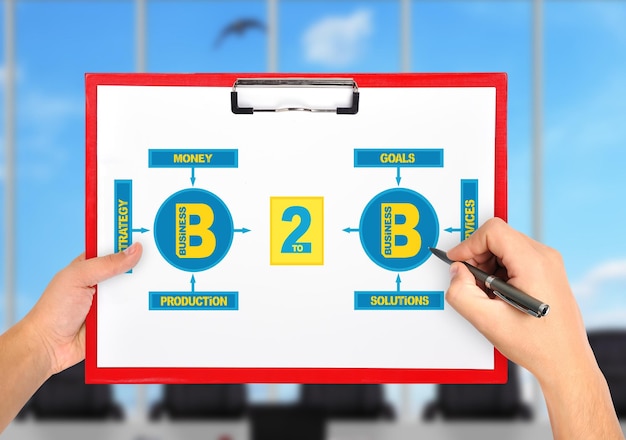Employee Benefits Benchmarking: Competitive Packages in 2025

Employee benefits benchmarking in 2025 is crucial for US companies to attract and retain talent by offering packages that align with industry standards, meet employee needs, and remain competitive in a dynamic job market.
Are your employee benefits competitive enough to attract and retain top talent in 2025? **Employee benefits benchmarking** is the process of comparing your benefits package against those of your competitors and industry leaders, ensuring you’re offering what employees value most.
Understanding Employee Benefits Benchmarking for 2025
Employee benefits are a critical component of the overall compensation package and play a significant role in attracting and retaining talent. **Employee benefits benchmarking** helps employers understand how their offerings stack up against competitors and industry standards.
By understanding the current landscape, companies can make informed decisions about their benefits strategies moving forward.
Why is benchmarking essential for competitive benefits packages?
Benchmarking provides valuable insights into what other employers are offering, helping companies to:
- Attract top talent by offering benefits that are in line with or better than industry standards.
- Retain existing employees by demonstrating a commitment to their well-being and financial security.
- Control costs by identifying areas where benefits spending can be optimized without sacrificing employee satisfaction.
- Improve employee satisfaction and productivity by offering benefits that meet their needs and expectations.
Key Components of a Comprehensive Benefits Package:
A competitive employee benefits package typically includes a variety of components, such as:
- Health insurance (medical, dental, and vision)
- Retirement savings plans (401(k), pensions)
- Paid time off (vacation, sick leave, holidays)
- Life insurance and disability coverage
Additional benefits may include wellness programs, employee assistance programs (EAPs), tuition reimbursement, and flexible work arrangements.
By understanding the key components and their importance to employees, companies can create a package that resonates with their workforce and fosters a positive work environment.

Current Employee Benefits Trends in the US Market
The employee benefits landscape is constantly evolving, driven by factors such as changing demographics, technological advancements, and economic conditions. Staying informed about current trends is essential for maintaining a competitive benefits package.
Understanding the trends allows companies to proactively adjust their offerings.
Rising Healthcare Costs:
One of the biggest challenges facing employers is the rising cost of healthcare. To combat this, companies are exploring various strategies, such as:
- Implementing wellness programs to promote employee health and prevent costly medical conditions.
- Offering high-deductible health plans (HDHPs) with health savings accounts (HSAs) to encourage consumerism and control costs.
- Negotiating with healthcare providers to secure better rates.
Increased Focus on Mental Health:
Mental health is increasingly recognized as a critical component of overall well-being. Employers are responding by:
- Expanding access to mental health services through their health insurance plans.
- Offering employee assistance programs (EAPs) that provide confidential counseling and support.
- Promoting mental health awareness through training and education programs.
Demand for Flexible and Personalized Benefits:
Employees are increasingly demanding flexible and personalized benefits that meet their individual needs. Employers are responding by:
- Offering a wider range of benefit options to choose from.
- Implementing flexible spending accounts (FSAs) and health reimbursement arrangements (HRAs) to allow employees to customize their benefits.
- Offering flexible work arrangements, such as remote work and compressed workweeks.
Planning Your 2025 Benefits Benchmarking Strategy
Developing a comprehensive employee benefits benchmarking strategy is essential for ensuring that your offerings remain competitive and meet the evolving needs of your workforce.
A strategy helps companies prioritize and organize their benchmarking efforts.
Setting Clear Objectives:
Before embarking on a benchmarking exercise, it’s crucial to define your objectives. What specific benefits are you looking to benchmark? What are you hoping to achieve by doing so? For example, you may want to:
- Reduce healthcare costs.
- Improve employee retention.
- Increase employee satisfaction.
Identifying Key Competitors and Industry Leaders:
Determining who to benchmark against is another important step. Consider:
- Direct competitors in your industry.
- Companies known for their innovative benefits packages.
- Companies located in similar geographic areas.
The more relevant the benchmark, the more valuable the insights will be.
Analyzing the benefits packages of similarly sized companies in your industry offers the best insights.
Gathering and Analyzing Data:
Once you’ve identified your benchmarks, you’ll need to gather data on their benefits packages. This can be done through:
- Publicly available information (e.g., company websites, annual reports)
- Surveys and questionnaires
- Consulting firms specializing in employee benefits
Data analysis can help identify areas where your benefits package excels and areas where it falls short. Careful analysis will bring attention to areas of improvement.

Implementing Changes Based on Benchmarking Results
The ultimate goal of employee benefits benchmarking is to identify areas where improvements can be made to enhance employee satisfaction, attract top talent, and control costs.
Changes based on benchmarking must align with employee needs and company finances.
Prioritizing Improvements:
Based on your benchmarking analysis, you’ll likely identify a number of areas where improvements can be made. Prioritize these improvements based on:
- Impact on employee satisfaction and retention.
- Cost-effectiveness.
- Alignment with your company’s overall goals and values.
Communicating Changes to Employees:
Once you’ve decided on the changes you’ll be making, it’s important to communicate them effectively to your employees. Clearly explain:
- What changes are being made.
- Why the changes are being made.
- How the changes will benefit employees.
This will help to ensure that employees understand the changes and appreciate the value of their benefits package.
Providing open and honest communication builds trust and fosters a positive work environment.
Measuring the Impact of Changes:
After implementing changes to your benefits package, it’s important to measure their impact. Track key metrics such as:
- Employee satisfaction scores.
- Employee retention rates.
- Healthcare costs.
This will help you to determine whether the changes have been successful and whether further adjustments are needed.
Tools and Resources for Effective Benchmarking
Several tools and resources are available to assist employers in conducting employee benefits benchmarking.
These tools can streamline the process and provide valuable insights.
Consulting Firms:
Consulting firms specializing in employee benefits can provide expert guidance and support throughout the benchmarking process. These firms can:
Offer industry insights and best practices, conduct comprehensive benchmarking studies, and help design and implement competitive benefits packages.
- Provide access to proprietary data and benchmarking tools.
- Offer customized recommendations tailored to your company’s specific needs.
Online Surveys and Databases:
Several online surveys and databases provide access to employee benefits data. These resources can help you:
Gain a broad understanding of industry trends, compare your benefits package to those of other employers, and identify areas where improvements can be made.
- Access aggregated data from a wide range of companies.
- Filter data by industry, company size, and location.
Industry Associations:
Industry associations often conduct their own employee benefits surveys and research. These resources can provide valuable insights into:
Best practices within your specific industry, emerging trends, and the needs and expectations of employees in your field.
- Access industry-specific data and analysis.
- Network with other employers in your industry to share best practices.
Future-Proofing Your Employee Benefits Strategy
As the workforce and the business landscape continue to evolve, it’s essential to future-proof your employee benefits strategy. Stay ahead of the curve by monitoring emerging trends, listening to employee feedback, and adapting your offerings to meet their changing needs.
A proactive approach ensures long-term competitiveness of your benefits package.
Embrace Technology:
Technology is playing an increasingly important role in employee benefits. Consider:
Implementing online benefits enrollment platforms, offering virtual health services, and using data analytics to personalize the benefits experience.
- Utilizing artificial intelligence (AI) to personalize benefits recommendations.
- Offering mobile apps that allow employees to access their benefits information on the go.
Focus on Employee Well-being:
Employee well-being is no longer just a perk; it’s becoming a core component of a competitive benefits package. Investing in employee well-being can lead to:
Improved health outcomes, increased productivity, and higher employee satisfaction.
- Offering comprehensive wellness programs that address physical, mental, and financial well-being.
- Providing access to resources that promote healthy lifestyles.
Promote Inclusivity and Diversity:
Your benefits package should be inclusive and designed to meet the diverse needs of your workforce. Consider:
Offering benefits that support different family structures, providing targeted programs for specific employee groups, and promoting cultural awareness.
- Offering benefits that cater to different age groups and lifestyles.
- Providing resources to support employees from diverse backgrounds.
| Key Point | Brief Description |
|---|---|
| 📈 Benchmarking Importance | Crucial for competitive benefits, employee retention, and cost control. |
| ⚕️ Healthcare Trends | Rising costs drive wellness programs and high-deductible plans. |
| 🧠 Mental Health Focus | Increased access to mental health services and support programs. |
| 🤝 Personalization Demand | Employees want flexible and customizable benefits options. |
Frequently Asked Questions
▼
Employee benefits benchmarking is the process of comparing your company’s benefits package against those of competitors and industry leaders to ensure competitiveness.
▼
It helps attract and retain top talent, control costs, and improve employee satisfaction by offering benefits that meet their needs.
▼
Key components include health insurance, retirement plans, paid time off, life insurance, and disability coverage, along with wellness programs.
▼
It’s recommended to conduct benchmarking annually or bi-annually to stay abreast of market changes and ensure your benefits remain competitive.
▼
Consulting firms, online surveys, industry associations, and publicly available data can provide valuable insights for effective benchmarking.
Conclusion
Employee benefits benchmarking is essential for US companies in 2025 to remain competitive, attract and retain talent, and meet the evolving needs of their workforce. By understanding current trends, setting clear objectives, and utilizing available resources, organizations can create a comprehensive benefits strategy that drives employee satisfaction and business success.





